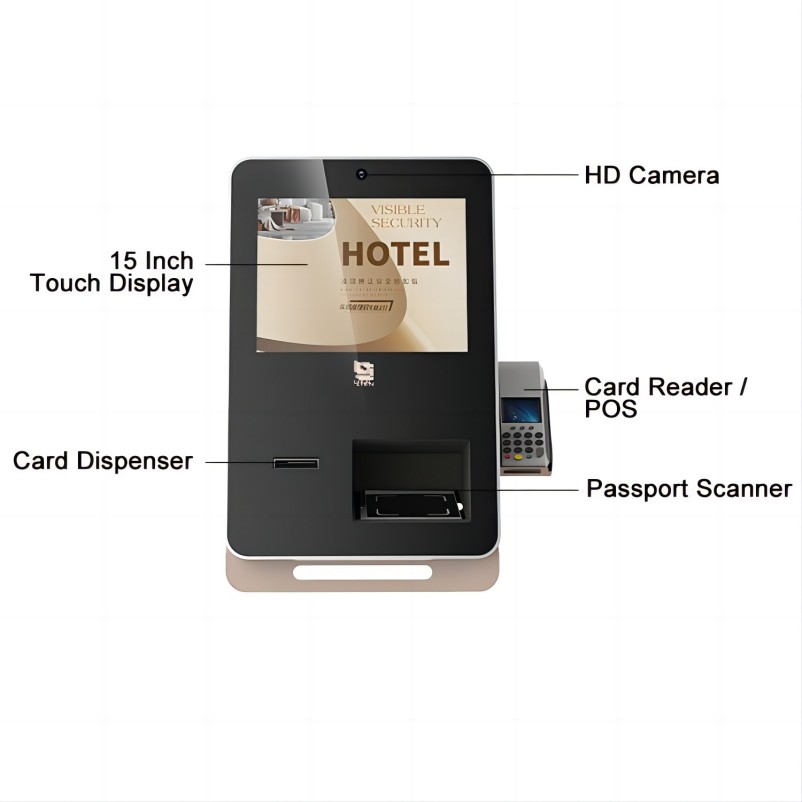Check in kiosk software typically refers to software designed to facilitate self-service check-in processes for various purposes, such as at airports, hotels, events, or healthcare facilities.

Pros: Widely used, extensive software compatibility, good for gaming, regular updates and support from Microsoft.
Cons: Can be prone to viruses and malware, updates sometimes disrupt workflow, licensing costs for business editions.
Pros: Highly customizable, open-source, secure, vast software repository, great for developers and tech enthusiasts.
Cons: Requires more technical knowledge, some software compatibility issues (especially proprietary software), not as user-friendly for casual users.
Pros: Open-source, customizable, vast app ecosystem, available on a wide range of devices.
Cons: Fragmentation (different versions across devices), security concerns due to open nature, updates depend on device manufacturer.
Typography: Choosing fonts that are easy to read and appropriate for the context.
Color Scheme: Selecting colors that convey the right mood and ensure readability.
Layout: Organizing interface elements in a logical and aesthetically pleasing manner.
Menus and Buttons: Designing clear navigation menus and buttons that guide users through the interface.
Information Hierarchy: Structuring content to prioritize important information and actions.
Feedback: Providing visual and auditory feedback to confirm user actions and inform of system status.
Responsiveness: Ensuring that the interface responds quickly and smoothly to user interactions.
Consistency: Maintaining consistent design patterns and behaviors across the interface.
Inclusivity: Designing interfaces that are accessible to users with disabilities, considering factors like screen readers, keyboard navigation, and color contrast.
Adaptability: Creating interfaces that work well across different devices and screen sizes.
User-Centered Design: Focusing on the needs and behaviors of users throughout the design process.
User Testing: Iteratively testing the interface with real users to identify usability issues and gather feedback for improvement.
Clarity: Ensure that interface elements and actions are clear and understandable to users.
Consistency: Maintain consistent design patterns, colors, typography, and behaviors throughout the interface.
Hierarchy: Organize information and actions based on their importance and frequency of use.
Feedback: Provide immediate and informative feedback to users upon their actions.
Simplicity: Keep the interface simple and avoid unnecessary complexity that can confuse users.
Accessibility: Design with accessibility in mind to ensure all users can interact with the interface effectively.
Aesthetics: Create visually appealing interfaces that enhance the overall user experience.
Conducting research to understand the needs, behaviors, and motivations of users.
Using techniques such as user interviews, surveys, and usability testing to gather insights.
Organizing and structuring information in a way that is intuitive and easy for users to navigate.
Creating wireframes and prototypes to define the structure and flow of the user interface.
Designing interactive elements and behaviors that facilitate user tasks and goals.
Focusing on usability, responsiveness, and intuitive interactions.
Creating a visually appealing interface that aligns with the brand and enhances usability.
Considering aspects like typography, color scheme, and visual hierarchy.
Testing the product with real users to identify usability issues and gather feedback for improvement.
Iteratively refining the design based on testing results.
Ensuring the product is accessible to users with disabilities, considering factors like screen readers, keyboard navigation, and color contrast.
Prototyping and Iteration:
Creating prototypes to visualize and test design ideas before final implementation.
Iteratively refining the design based on feedback and insights gathered from users.
User-Centered Design: Placing the needs and preferences of users at the center of the design process.
Consistency: Maintaining consistent design patterns, terminology, and behaviors across the product.
Clarity: Ensuring that the interface and interactions are clear and understandable to users.
Feedback: Providing timely and informative feedback to users to acknowledge their actions and inform them of system status.
Simplicity: Striving for simplicity and minimalism in design to reduce cognitive load and enhance usability.
Emotional Design: Considering the emotional impact of the design on users and aiming to create positive experiences.
Accessibility: Designing with inclusivity in mind to ensure all users, regardless of abilities, can access and use the product effectively.